In an era where environmental consciousness is paramount, the automotive industry has made significant strides in reducing harmful emissions. One of the unsung heroes in this endeavor is the charcoal canister. Often overlooked by the average driver, this small but crucial component plays a vital role in controlling vehicle emissions. In this article, we will delve into the function of a charcoal canister, its significance in emission control, and how it contributes to cleaner air.
- What is a Charcoal Canister?
- The Role of the Charcoal Canister in Emission Control
- Why is a Charcoal Canister Important?
- Signs of a Failing Charcoal Canister
- Maintenance and Care for Charcoal Canisters
- Technological Advances in Emission Control
- The Future of Vehicle Emission Control
- Future Innovations in Charcoal Canisters
- The Role of Charcoal Canisters in a Circular Economy
What is a Charcoal Canister?
A charcoal canister, also known as an evaporative emission control (EVAP) canister, is a device found in most modern vehicles equipped with internal combustion engines. Its primary purpose is to capture and store fuel vapors that would otherwise escape into the atmosphere. The canister is filled with activated charcoal, a highly porous material that effectively absorbs these vapors.
The Role of the Charcoal Canister in Emission Control
When fuel is stored in a vehicle’s tank, it naturally produces vapors due to evaporation. Without proper management, these vapors could be released directly into the environment, contributing to air pollution and smog formation. The charcoal canister acts as a barrier, preventing these harmful emissions from escaping.
- Vapor Capture: During regular operation, the canister captures fuel vapors that rise from the fuel tank. This process typically occurs when the vehicle is parked and the engine is off.
- Storage: The activated charcoal within the canister holds these vapors until they can be safely burned off during the engine’s operation.
- Purging: When the engine is running, the vehicle’s onboard computer activates a purge valve, allowing the stored vapors to be drawn into the engine’s intake manifold. This process helps to combust the vapors, converting them into harmless gases.
Why is a Charcoal Canister Important?
The importance of a charcoal canister extends beyond mere compliance with regulations. Here are a few key reasons why this component is essential:
- Environmental Protection: By capturing and storing fuel vapors, the charcoal canister significantly reduces the amount of volatile organic compounds (VOCs) released into the atmosphere, thus playing a crucial role in mitigating air pollution.
- Fuel Efficiency: By preventing fuel vapors from escaping, the canister ensures that more fuel is utilized during combustion, enhancing overall fuel efficiency.
- Regulatory Compliance: Many countries have stringent emission regulations in place. A functioning charcoal canister is essential for vehicles to meet these standards, helping manufacturers avoid hefty fines.
Signs of a Failing Charcoal Canister
Like any vehicle component, charcoal canisters can wear out over time. Recognizing the signs of a failing canister is crucial for maintaining a vehicle’s emission control system. Here are common indicators:
- Check Engine Light: A lit check engine light can indicate various issues, including problems with the EVAP system.
- Fuel Smell: A strong smell of gasoline, particularly near the fuel tank, may suggest that fuel vapors are escaping due to a malfunctioning canister.
- Poor Fuel Economy: A decrease in fuel efficiency can sometimes be attributed to a failing charcoal canister, as fuel vapors are not being effectively utilized.
The charcoal canister is a critical component in the vehicle’s emission control system, playing a pivotal role in reducing harmful pollutants and improving fuel efficiency. Understanding its function not only helps vehicle owners appreciate the technology behind their cars but also emphasizes the importance of maintaining such components for environmental sustainability. Regular vehicle maintenance should always include checks on the EVAP system to ensure the charcoal canister and its associated components are functioning correctly. In doing so, we contribute to cleaner air and a healthier planet.
Maintenance and Care for Charcoal Canisters
To ensure the charcoal canister functions optimally, regular maintenance and timely inspections are recommended. Here are some best practices for keeping this vital component in top shape:
- Routine Inspections: During regular vehicle maintenance, mechanics should check the EVAP system, including the charcoal canister, for any signs of wear or damage. This proactive approach can help prevent costly repairs down the line.
- Replace When Necessary: If a charcoal canister is found to be malfunctioning, it’s crucial to replace it promptly. Continuing to use a damaged canister can lead to further issues within the emission control system and may affect overall vehicle performance.
- Monitor Fueling Habits: Avoid overfilling the gas tank, as this can lead to fuel overflow that may compromise the canister’s effectiveness. Always stop filling once the nozzle clicks to prevent fuel from entering the canister.
Technological Advances in Emission Control
As automotive technology continues to evolve, so do the methods of emission control. Innovations in charcoal canister design and materials are being explored to enhance their effectiveness and longevity. Some notable advancements include:
- Improved Adsorbent Materials: Researchers are developing new materials that offer better vapor absorption capabilities, aiming to enhance the efficiency of charcoal canisters in capturing and storing fuel vapors.
- Smart Sensors: The integration of smart technology and sensors can allow for real-time monitoring of the canister’s performance. This data can aid in predictive maintenance, alerting drivers when a replacement is necessary before it becomes critical.
- Hybrid and Electric Vehicle Innovations: As the demand for hybrid and electric vehicles increases, manufacturers are exploring alternative technologies to manage evaporative emissions without relying solely on traditional charcoal canisters.
The Future of Vehicle Emission Control
With global initiatives aimed at reducing carbon footprints and improving air quality, the future of vehicle emission control systems, including charcoal canisters, will continue to be a focal point for automotive engineers and environmental advocates alike. As regulations become more stringent, manufacturers will innovate to create cleaner, more efficient vehicles. This shift will likely involve:
- Enhanced Regulatory Standards: Governments worldwide are tightening emissions regulations, which will push manufacturers to adopt more advanced technologies in their vehicles.
- Increased Public Awareness: As consumers become more educated about vehicle emissions and their impact on the environment, there will be greater demand for transparent information regarding vehicle emissions systems, including the role of charcoal canisters.
- Collaboration Across Industries: The automotive sector may collaborate with environmental organizations to promote research and development of sustainable emission control technologies that benefit both consumers and the planet.
The charcoal canister is a small but mighty component in the fight against vehicle emissions. With its crucial role in capturing and managing fuel vapors, it not only helps protect the environment but also contributes to more efficient fuel use. By understanding the importance of this technology and committing to regular maintenance, vehicle owners can play a part in reducing emissions and fostering a cleaner future. As we look ahead, embracing innovative solutions and maintaining awareness of evolving technologies will be essential in maintaining the balance between automotive performance and environmental responsibility.
Future Innovations in Charcoal Canisters
As the automotive industry pushes towards more sustainable practices, the charcoal canister is poised for transformation. With the advent of electric and hybrid vehicles, traditional methods of emission control are evolving. Here are some anticipated innovations in charcoal canister technology:
- Advanced Carbon Materials: Researchers are exploring the use of nanomaterials and activated carbon composites that can dramatically increase the absorption capacity of charcoal canisters. These materials could lead to smaller, more efficient canisters that take up less space while performing better.
- Integration with Vehicle Systems: Future charcoal canisters may be designed to work seamlessly with other vehicle systems. For instance, integrating them with engine management systems could allow for real-time adjustments based on driving conditions, optimizing emissions control further.
- Self-Regenerating Canisters: Imagine a charcoal canister that could regenerate itself during normal vehicle operation. This would minimize the need for replacements and enhance the longevity and effectiveness of the emission control system.
The Role of Charcoal Canisters in a Circular Economy
In a world increasingly focused on sustainability, the charcoal canister plays a vital role in the concept of a circular economy. By effectively capturing and reusing fuel vapors, these canisters contribute to resource efficiency. Here’s how:
- Waste Reduction: By capturing fuel vapors that would otherwise escape into the atmosphere, charcoal canisters minimize waste, supporting a more resource-efficient automotive industry.
- Recyclability: Many components of charcoal canisters can be recycled, further contributing to a circular economy. As manufacturers innovate, they are likely to focus on creating canisters that can be more easily disassembled and repurposed.
- Life Cycle Assessment: As part of a broader sustainability strategy, vehicle manufacturers are increasingly conducting life cycle assessments on components like charcoal canisters. This ensures that every aspect of production, from raw material extraction to end-of-life disposal, is optimized for environmental impact.
The humble charcoal canister may not be the flashiest component of a vehicle, but its role in emission control is indispensable. As automotive technology advances and emissions regulations become stricter, the importance of this small but mighty part will only grow. By understanding and maintaining charcoal canisters, vehicle owners not only ensure compliance with regulations but also contribute to a cleaner, healthier environment.

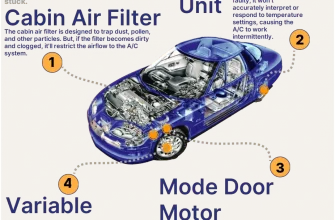
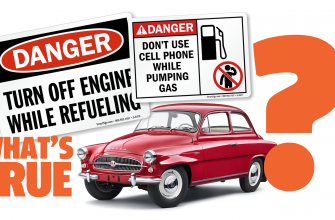
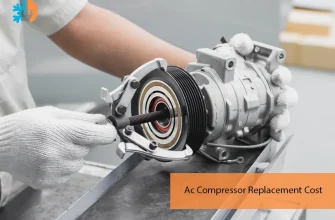

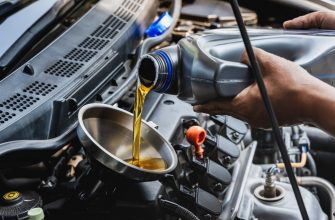
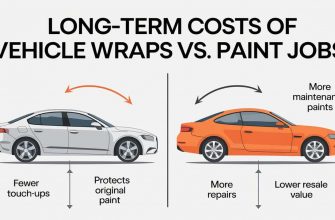
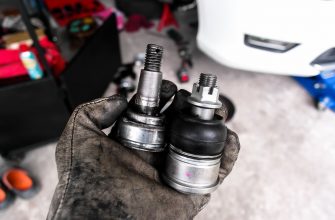
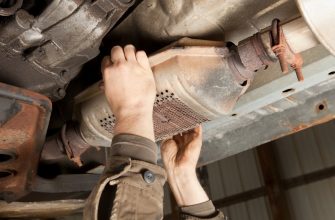
This article does a fantastic job of explaining the often-overlooked charcoal canister! I never realized how vital it is for reducing emissions. Great read!
Incredibly informative! The detailed explanation of how the charcoal canister works was enlightening. We need more articles like this to raise awareness about vehicle emissions.
What an eye-opener! I had no idea that fuel vapors could be so harmful, and I’m glad to know that there are mechanisms like the charcoal canister to help manage them.
I appreciate how this article highlights the importance of emission control technologies like charcoal canisters. It
A well-written piece that sheds light on an essential part of our vehicles! The explanation of vapor capture and purging was particularly interesting. Highly recommend reading!
I learned so much about the role of charcoal canisters in emission control. It’s amazing how such a small component can make such a big difference for our environment.